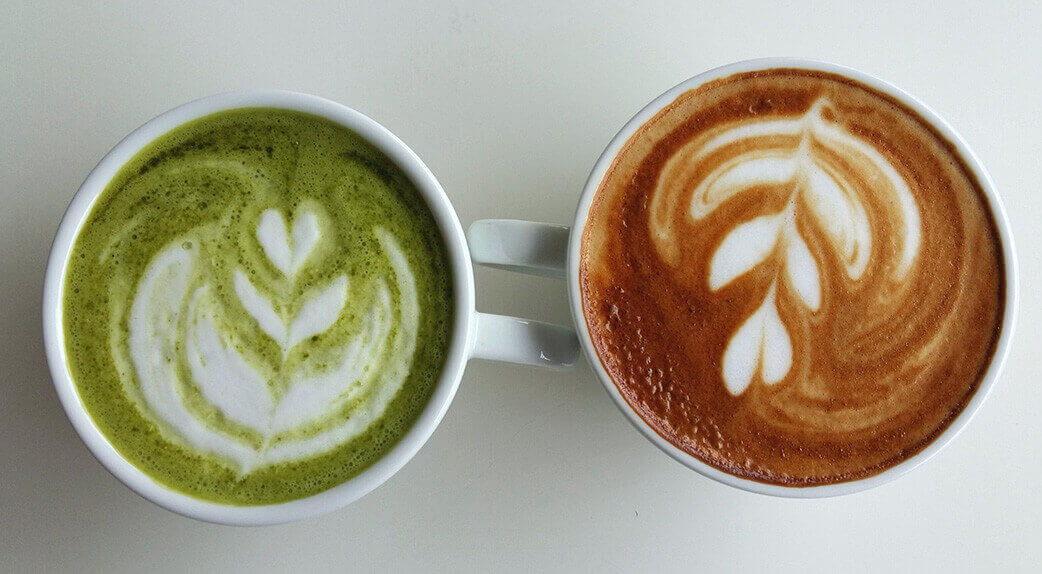Surfing on the growing success and the thousand-year-old reputation of Japanese matcha tea, "blue matcha" plays the usurper. And for good reason: it contains no tea leaves, but flower petals... hence its unusual colour. This blue powder does not belong to the tea family and does not come from Japan!

Blue matcha, a flower infusion from Thailand
Blue matcha does not contain powdered tea leaves, but ground petals of Butterfly Pea flowers, an ayurvedic plant also called "Blue Pea", "Butterfly Pea Flower" or "Clitoria ternatea" (in Latin). This is why we prefer to speak of an infusion, rather than a tea. This perennial climbing plant of the Fabaceae family (like the bean or wisteria), found in South-East Asia, is renowned for its blue petals. It is popular as a natural colouring agent in cooking recipes and is used in lattes, smoothies, ice cream and cakes.
Is blue matcha a matcha tea?
Absolutely not. Blue matcha is not a green tea powder, and certainly not a matcha tea. They are both products from different plants. One is a tea plant, the other is a flower. Nevertheless, they have points in common, which may explain why the name matcha was (wrongly) chosen: they are coloured powders, one green, the other blue, which are consumed in the same way, diluted in water, incorporated into cooking recipes, or in cosmetics (mask, soap...). In Malaysia, blue matcha is incorporated into a rice-based dish that has turned sky blue, called Nasi Kerabu. Whatever you use it for, we recommend that you opt for organic blue matcha, which is more respectful of the planet and much better for your health.
What does blue matcha taste like?
Blue Matcha has a very mild floral and herbal taste. If you add a few drops of lemon, its colour will magically change from azure blue to dark purple (try it!). Note that there is also "pink matcha" on the market, made from dragon fruit powder, often from Indonesia. Its taste is much fruitier and is comparable to a combination of kiwi, strawberry and watermelon.
What are the benefits of blue matcha?
Thanks to its high zinc content, blue matcha is said to have a relaxing effect, as well as being an antioxidant (protecting cells from oxidative stress), while making skin and hair glow. These virtues may seem quite similar to those attributed to matcha tea. This may also explain the connection between the two names. Japanese matcha tea is also known for its antioxidants (which are not exactly the same as those found in blue matcha), but which also help to fight against ageing, and have a soothing and anti-reddening effect on the skin. However, real Japanese matcha tea contains molecules specific to the tea plant (which blue matcha does not have): theine, which stimulates energy and cognitive functions, and theanine, an amino acid that reduces stress and has a relaxing effect.
Our opinion on Blue Matcha
There are many fake matcha teas on the market: blue matcha, pink matcha... There is no shortage of names. A way to differentiate them? Their colour, their taste, their origin (Japanese for the real ones) and... their price! Beware of low prices, as matcha is known to be sold at a higher price than other teas due to its quality. In order to choose the right green tea powder, we recommend that you opt for organic matcha. Indeed, the organic designation guarantees you a quality tea, without pesticides and raised in the respect of the environment because of the many quality controls made during the production. To enjoy it in the best way, you will need a bowl and a whisk. Heat water to 75°C. The water should not be too hot. Place the matcha in the bottom of the bowl, then carefully pour in the water. Stir with the whisk so that the powder in the bowl diffuses. To whisk well, the whisk should barely touch the bowl. You can then add milk.
Blue Matcha is therefore part of the fake matcha family and has nothing to do with its cousins, green or black teas. This blue powder actually comes from flowers. It originates from Thailand and is not a Japanese tea either. When you drink blue matcha, you won't get the same benefits as classic matcha tea. So grab your whisk and your bowl and enjoy!
Read also on the same theme :
Our matcha latte recipe with coconut
Our matcha latte recipe with chai
Understanding the price of matcha tea
Does matcha tea help you lose weight?

